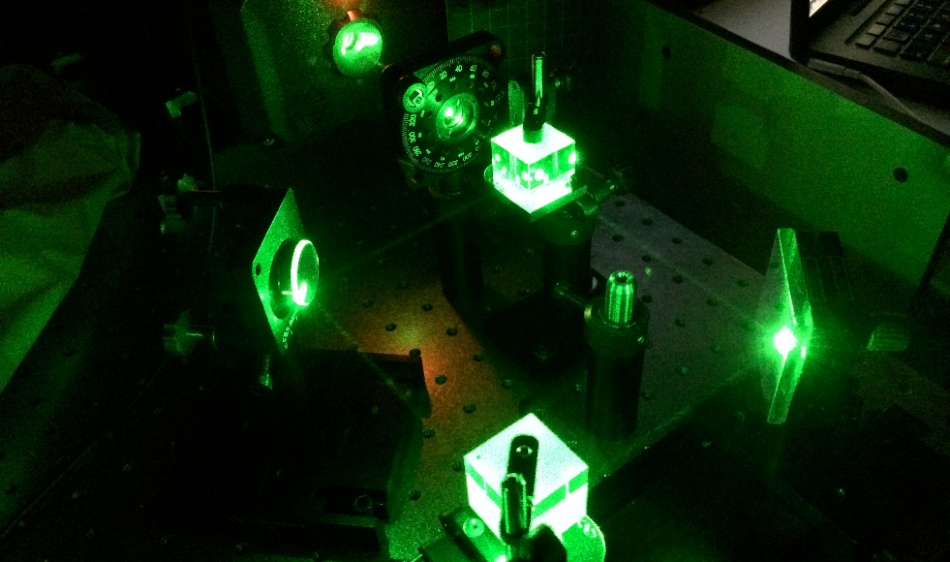Feb 4 2020
Researchers from McMaster University and Harvard University have teamed up to create a new platform, where light beams interact with each other via solid matter, thereby setting the groundwork for studying a new kind of platform for computing purposes.
 Image Credit: McMaster University.
Image Credit: McMaster University.
The researchers’ study has been detailed in a paper recently published in the Proceedings of the National Academy of Sciences.
According to Kalaichelvi Saravanamuttu, an associate professor of Chemistry and Chemical Biology at McMaster, the novel technology brings together a new kind of hydrogel created by the Harvard researchers with measurement methods and light manipulation carried out in her laboratory, which deals with the chemistry of light-responsive materials.
The new, translucent material has the appearance of raspberry Jell-O. It integrates molecules that respond to light and the structure of these molecules varies in the presence of light, imparting unique properties to the hydrogel to contain light beams as well as transfer data between them.
Light beams usually widen when they move, but the hydrogel has the ability to contain laser light filaments along their pathway via the material as if the light were being pushed via a pipe.
The team has demonstrated that when numerous laser beams, each measuring around half the diameter of a single strand of human hair, are illuminated via the same material, these laser beams impact the intensity of each other, even when there is no overlapping of their optical fields—a fact that demonstrates that hydrogen gel is indeed “intelligent.”
The communication between those light filaments can be started, stopped, controlled, and read. This process creates a high-speed, predictable output—a type of data that can possibly be made into a circuit-free form of computing, explained Saravanamuttu.
Though they are separated, the beams still see each other and change as a result. We can imagine, in the long term, designing computing operations using this intelligent responsiveness.
Kalaichelvi Saravanamuttu, Associate Professor, Department of Chemistry and Chemical Biology, McMaster University
Although the wider concept of computing with light happens to be a separate and advancing field unto itself, the novel technology brings a potential platform, stated Derek Morim, a graduate student in Saravanamuttu’s laboratory and the study’s co-first author.
Not only can we design photo-responsive materials that reversibly switch their optical, chemical and physical properties in the presence of light, but we can use those changes to create channels of light, or self-trapped beams, that can guide and manipulate light. Further study may allow us to design even more complex materials to manipulate both light and material in specific ways.
Derek Morim, Study Co-First Author and Graduate Student, McMaster University
According to Amos Meeks, a graduate student at Harvard’s John A. Paulson School of Engineering and Applied Sciences, the new technology helps develop the concept of all-optical computations or computing that are only performed using light beams.
Most computation right now uses hard materials such as metal wires, semiconductors and photodiodes, to couple electronics to light. The idea behind all-optical computing is to remove those rigid components and control light with light. Imagine, for example, an entirely soft, circuitry-free robot driven by light from the sun.
Amos Meeks, Study Co-First Author and Graduate Student, McMaster University